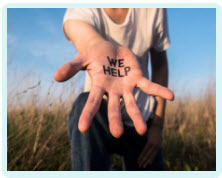
Why might an assisted delivery lead to a 3rd degree tear?
During an exhausting labour, an assisted delivery can be very helpful. But, what if their use increases the chances of experiencing a severe tear?
What is an assisted delivery?
An assisted delivery means that the doctor or midwife will use either forceps or a ventouse to help the baby pass through and out of the vagina.
Forceps are a medical instrument like a pair of tongs which are placed on either side of the baby's head and used to pull him gently out of the vagina as the mother pushes.
A ventouse – or suction cap – is a plastic mould that is attached to the top of the baby's head with suction and, like the forceps, is used to help pull the baby gently out of the vagina.
Why do assisted deliveries occur?
An assisted delivery will be considered when a natural vaginal birth is proving problematic. This is more likely if it is the mother's first vaginal birth and happens with approximately one in eight women.
Circumstances which might lead to an assisted delivery include:
- A long, unsuccessful labour which has caused the mother to become fatigued
- The baby is in a difficult position and birth is unlikely without assistance
- The baby is showing signs of distress
Why would an assisted delivery increase the chances of a 3rd degree tear?
The use of a ventouse or forceps to help the delivery of a baby will increase pressure on the vaginal opening as the midwife will need to be able to access the baby's head and attach or manoeuvre the medical device. Although the skin of the perineum - between the vagina and anus -is flexible, the pressure on the vagina and perineum to stretch as the baby emerges may cause the skin to tear. The additional pressure of medical instruments may increase the chances that the tear will be worse. The use of forceps or a ventouse is a recognised risk factor in the occurrence of third degree tears.
A third degree tear extends from the vagina, affecting the skin and muscles of the perineum to the anal sphincter – the muscles which control the functioning of the anus.
Sometimes, the medical practitioner will carry out an episiotomy – a cut to the perineum – deliberately to increase the size of the vaginal opening in order to make the birth of the baby easier. There is some evidence that an episiotomy might increase the chances of a more severe tear occurring.
What is the treatment for a 3rd degree tear?
Third and 4th degree tears are severe tears and need to be diagnosed and fully repaired by an experienced surgeon in an operating theatre as soon as possible after the birth. The mother will need a thorough examination following the operation to ensure that the full extent of the tear has been repaired so that there will be no on-going symptoms such as wind and faecal incontinence. The mother will need to take a course of antibiotics to prevent infection during the recovery period and may be advised on additional ways to ease her pain and aid recovery of her perineum and surrounding area.
Medical Negligence
The effects of an untreated perineal tear can have a considerable impact on the mother at a time when she will want to be bonding with her baby. If a 3rd or 4th degree tear is missed by medical practitioners, leading to distressing, on-going effects, it may be possible to make a claim for compensation.
Contact Glynns Solicitors to discuss your circumstances. We are a team of solicitors specialising in medical negligence and have considerable experience of supporting mothers who have suffered from untreated perineal tears.
Please call us on 0800 234 3300 (or from a mobile 01275 334030) or complete our Online Enquiry Form.



